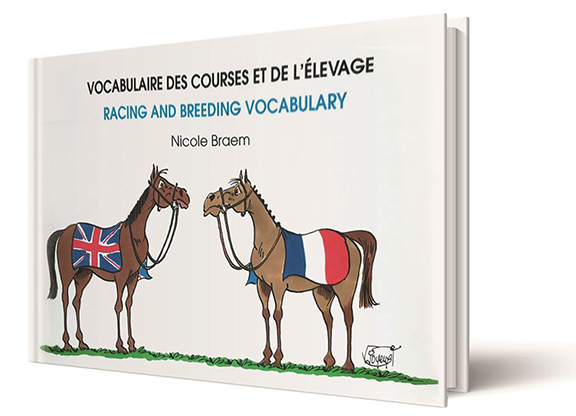By Sue Finley
In my 10th year of French studies, I took a year-long course in translation. Whenever a student would ask, “but why do they say `I have 18 years' instead of `I am 18 years old?'” the teacher's answer was the same: Because French is not English using different words. In other words, just accept it. This lesson was brought home to me when I was at the movies in Paris one day watching an American film. The actress said in English, “I'm completely lost here,” and the translation in French appeared on the screen: “I'm pedaling through yogurt.” Certainly not what she said…but to the French, apparently what she meant.
Each individual industry, of course, has its own particular language. And in a sport where a jockey will come back after a workout and say, “I broke him off at the pole,” a complete mystery to outsiders, Thoroughbred racing is certainly no exception.
But just in time for English speakers heading to Deauville for the Arqana August Sale, help has arrived, in the form of Nicole Braem's “Vocabulaire des Courses et De L'Élevage,” or, “Racing and Breeding Vocabulary.”
The portable 67-page booklet is a helpful tool for anyone going from an English-speaking country to a French-speaking one (or vice versa) to conduct racing business.
Braem, who holds a Master's Degree in English from the University of Lille, is a former English teacher who subsequently spent 25 years riding out at Chantilly. She met the illustrator for the cover and the inside back cover, the French cartoonist JOYEUX, when they were both riding out for Maurice Zilber. She has divided the booklet into different sections in the industry; from professions (Je suis entraineur; mon écurie est à Chantilly) to anatomy, markings, racing and sales terms and more.
And so we learn that “bugboy” does not translate literally into some sort of `insecte-garçon' in France, where a new jockey is simply an “apprenti” or apprentice. France's names for a horse's front legs (antérieur droit and antérieur gauche) cite left and right, rather than near or fore, which makes more sense to me. A horse's frog isn't a grenouille at all, but a fourchette, the same word for a fork (not in the road, but the one that you eat with.) Horses wear iron (le fer) on their feet, rather than shoes, and they are fitted with iron (ferré) rather than being shod.
Of course, the most relevant section for this week is the section on `les ventes.' As we all see in the catalogue, horses are “presentés' rather than consigned, and you're not nominated to the Breeders' Cup; rather, you're qualified (qualifié). Mares aren't in foal; they're full, or `pleine.' (That's also a helpful lesson when you're in the Zinc Bar at Arqana and someone asks you if you'd like a sandwich. You're not full, which means pregnant. Instead, you don't have hunger. `Je n'ai pas faim.')
But just as sandwich translates to sandwich, we learn the disappointing news that yearlings translates to yearlings, breeze-up to breeze-up, and foal to foal. But say them with a French accent, and at least you'll feel like you're speaking French.
Jockey William Buick said he welcomed the publication of the booklet, writing, “to understand professional terms for horse racing in English and French is hugely important for everyone involved in the sport. One of my regrets personally is I never learned French in school, but I hope this booklet will help me in the future.”
The booklet will be on sale during the Arqana sale in the boutique and the welcoming office inside the main entrance. It is also available to purchase on Jour de Galop's online store.
For someone who used to beg my teachers to let me translate a Dick Francis book as my schoolwork, only to be told that it wasn't interesting enough, (it was to me), this book hits the spot.
Je vous verrai aux ventes!
Not a subscriber? Click here to sign up for the daily PDF or alerts.






